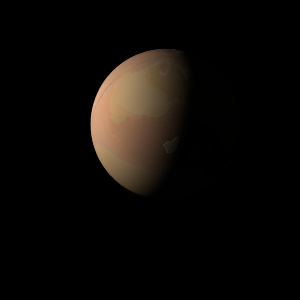|
|
Space Astro
|
Info for exoplanet "Hagou-tsu"
| Scientific (actual) data |
|---|
| Name | Kepler-228 b |
| Planet status | Confirmed |
| Radius | 0.136 |
| Orbital period | 2.56655 |
| Semi major axis | 0.038 |
| Discovered | 2014 |
| Updated | 2021-02-05 |
| Tconj | 2455010 |
| Impact parameter | 0.45 |
| Publication | Announced on a website |
| Detection type | Primary Transit |
| Alternate names | 2MASS J19450867+4813288 b, K00756.03, KIC 10872983 b, KOI-756 b, KOI-756.03, WISE J194508.65+481328.6 b |
| Star name | Kepler-228 |
| Right ascension | 296.29° |
| Declination | 48.22° |
| Mag j | 14.528 |
| Mag h | 14.113 |
| Mag k | 14.132 |
| Star distance | 1724.6 |
| Star metallicity | -0.067 |
| Star radius | 1.01 |
| Star temperature | 6043 |
| Star alternate names | 2MASS J19450867+4813288, KIC 10872983, KOI-756, WISE J194508.65+481328.6 |
| Wikipedia article | Kepler-228 b |
Back
| |
| Fictional info (?) |
|---|
| Suggested name | Hagou-tsu |
| Planet type | Hot planet |
| The planet telescopically displays the complete range of phases, similar to Venus and the Moon, as it moves in its inner orbit relative to Kepler-228, which reoccurs over the so-called synodic period approximately every 58 days. |
| Atmosphere | Hydrogen chloride | 77% |
| Hydrogen peroxide | 16% |
| Water vapor | 5.8% |
| 2H2O | 0.0031% |
| Atmospheric pressure | 0.8 bar |
 |
| No known satellites |
| Google search for Hagou-tsu |
|
Website by Joachim Michaelis
|
|
|
|